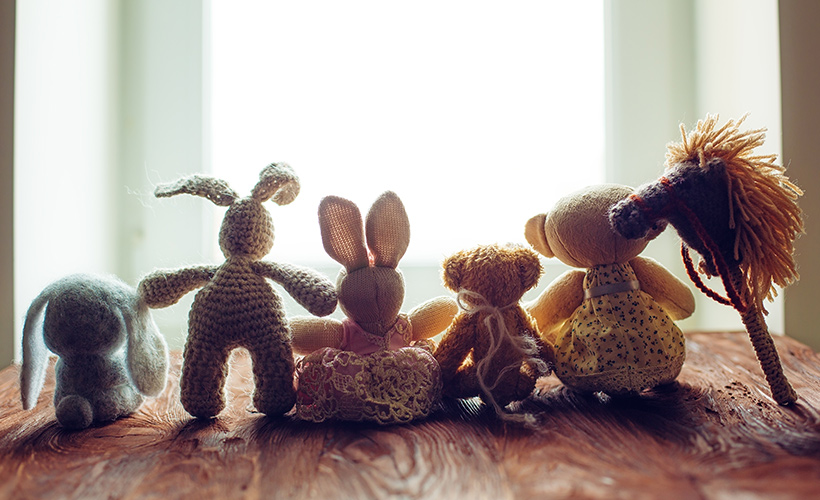I’m finding it hard to believe that I’ve already arrived at my seventh exploration in this thought experiment I’ve undertaken. It has really been an enjoyable experience and I’ve learned a lot along the way about being an explorer of the world, learning how to look at everything around me through a qualitative inquiry lens, simply experiencing the things that I normally would barely notice.
There are a total of 59 explorations in How to Be an Explorer of the World by Keri Smith, and by now I’ve read through them all several times. When I started this journey, I intended to complete only 8 of the 59, and with only two explorations left to go, I’m finding it more difficult to choose. While this is still my intention, I think I may return to this thought experiment later on. Perhaps I could repeat some that I’ve already completed and see what different lessons I can learn, or I could simply return to the explorations that I’ve marked with my blue Post-it notes but haven’t completed.
Regardless of where my future exploring takes me, this week’s exploration is taking me into the past, albeit without a time machine (the TARDIS was otherwise occupied this week).
Exploration #6: Archaeological Dig
This week asks the explorer to go back in time by collecting “objects that relate to your childhood or inspire memories” along with a brief story about each.
Lesson #1: The present isn’t the only source of data.

Just like I did last week, I chose to make some slight modifications to this exploration by including my husband, Jeff, in this archaeological dig instead of just myself. We’ve been spending a lot of time going through old family items lately and thinking about what items around the house will be moving with us this summer, so this exploration felt timely.
Lesson #2: The best study is a timely study.
Considering ours is a family of two, I thought it would be fun to look at three items from my childhood, three items from my husband’s childhood, and then an item or two from our time together. In a way, it’s like a narrative history of our paths coming together.
My History
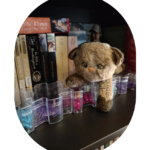 Whenever I think about objects from my past, there’s one that is always the first to come to mind: Kitty. Kitty is a small stuffed animal cat who purrs when she moves. Her fur is a little matted, her eyes are a little beat up from several trips through the washer and dryer over the past 20+ years, and her mouth is half missing, but she still purrs when I pick her up. Kitty went everywhere with me when I was a kid, and every time she was lost, I was devastated until she was found again. Today, she lives a peaceful life of retirement on my bookshelf, hanging out on my shelf of classics.
Whenever I think about objects from my past, there’s one that is always the first to come to mind: Kitty. Kitty is a small stuffed animal cat who purrs when she moves. Her fur is a little matted, her eyes are a little beat up from several trips through the washer and dryer over the past 20+ years, and her mouth is half missing, but she still purrs when I pick her up. Kitty went everywhere with me when I was a kid, and every time she was lost, I was devastated until she was found again. Today, she lives a peaceful life of retirement on my bookshelf, hanging out on my shelf of classics.
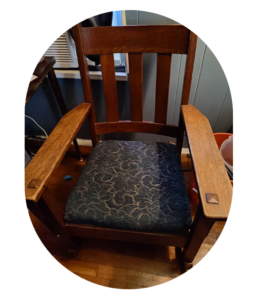 As we’ve been getting ready to move, we’ve been thinking about what furniture will go, what we should just sell, and where it should all go. My husband and I each have a couple of items that are sentimentally important and must have a special place in the new house. Mine is this rocking chair. I remember spending Saturday mornings sitting with my legs over the arm, reading a book or watching cartoons. My mom tells me this rocking chair has been passed down through the women in my family for about five generations or so. When I first moved to Texas from Ohio, I wasn’t able to bring it with me, but just a few summers ago we drove the truck for a visit and brought it back along with a few other items. I’m excited to see it in the new house.
As we’ve been getting ready to move, we’ve been thinking about what furniture will go, what we should just sell, and where it should all go. My husband and I each have a couple of items that are sentimentally important and must have a special place in the new house. Mine is this rocking chair. I remember spending Saturday mornings sitting with my legs over the arm, reading a book or watching cartoons. My mom tells me this rocking chair has been passed down through the women in my family for about five generations or so. When I first moved to Texas from Ohio, I wasn’t able to bring it with me, but just a few summers ago we drove the truck for a visit and brought it back along with a few other items. I’m excited to see it in the new house.
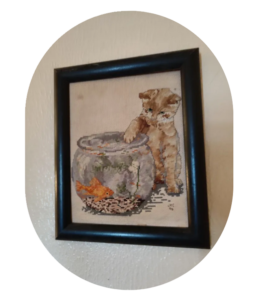
My final object for this activity is a cross-stitch that my mom made for me so long ago that neither of us can remember how old I was. I distinctly remember it hanging in my bedroom at the same time as the dinosaur wallpaper, so I must’ve been in the single digits. In case you couldn’t tell from the first item on this list, I’ve always loved cats. I have a vague memory of picking this pattern out and begging my mom to make it for me. When I moved to Texas, it came with me, and when I adopted an abandoned orange kitten a few months later who turned out to love staring into my fish tank, it was like the image came to life.
Jeff’s History
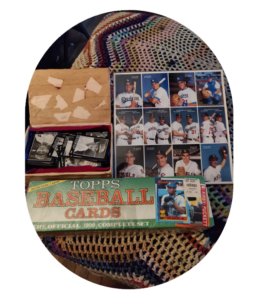 When I asked my husband what artifacts from his childhood he still has with him, his first answer was his baseball card collection. He started collecting them when he was just six years old and still adds to the collection now, though he only adds new cards once every year or so.
When I asked my husband what artifacts from his childhood he still has with him, his first answer was his baseball card collection. He started collecting them when he was just six years old and still adds to the collection now, though he only adds new cards once every year or so.
He also has a Sega Genesis in his closet that he got for Christmas when he was ten years old. He grew up playing games like Sonic the Hedgehog, Mortal Kombat, and Mutant League Football. The part I found the most impressive is that the console still works, though it’s been probably five or six years since he’s last hooked up. (It occurs to me as I write this that we’ve been married for about five and a half years. Interesting coincidence?)
The last item in this dig through my husband’s history is a baseball that Nolan Ryan signed for him at an Astros fan event when Jeff was 11 years old. The event was at the Astrodome, arguably one of the coolest stadiums (we both believe it’s a shame the way it’s been neglected in recent years). Nolan Ryan has always been Jeff’s favorite ball player, and this signed baseball is so important that it’s locked in his dad’s safe. Therefore, the picture here is a baseball signed by another of his favorite players at the same event, Art Howe.
Our History
In considering artifacts from our shared history, I’ve quickly realized that most of our memories have been in the things that we’ve done, not the things that we’ve owned. If I were a slightly more sentimental hoarder, I might have a box full of ticket stubs from the concerts and plays we’ve gone to together over the years, but I did find a couple of important artifacts.
Lesson #3: Life is lived in the experiences.
This picture shows a few items from our cruises, the first of which was our honeymoon. The tile was painted for us in Cozumel, Mexico, to remember our cruise and our swimming with dolphins excursion. The bear on the next shelf wearing a Carnival Breeze t-shirt is named Herbert the Hebert, and we had a great time taking pictures of him all over that honeymoon cruise. The ship captain bear beside him was a more recent addition from our fifth anniversary cruise this past November.
 In the years since we first met, we’ve visited several Houston breweries and done several pub crawls, collecting way too many beer glasses in the process, not that I can ever turn them down. My favorites are always the themed glasses that we’ve collected at the end of pub crawls, but we also have several glasses for specific beers. Arguably the best beer glass in the collection is the one from our wedding.
In the years since we first met, we’ve visited several Houston breweries and done several pub crawls, collecting way too many beer glasses in the process, not that I can ever turn them down. My favorites are always the themed glasses that we’ve collected at the end of pub crawls, but we also have several glasses for specific beers. Arguably the best beer glass in the collection is the one from our wedding.
Reflection
One of my initial reasons for choosing this particular exploration was simply that this is the kind of thing that we’ve been doing these past few weeks anyway. However, the simple act of writing down short and simple descriptions of some of these important artifacts has been a surprisingly thoughtful and reflective experience.
Lesson #4: Even if it’s simple, write it down.
Like I said at the beginning of this post, one of my goals in this whole journey has been to grow accustomed to noticing the things around me that I wouldn’t otherwise see. All of the artifacts described in this exploration are incredibly important to me, my husband, or us both. And yet, they’re items that often go overlooked in the regular hustle and bustle of daily life. As I’ve reflected in several of these explorations, one of the best lessons to be learned here is to…
Lesson #5: Slow down and take a close look at what’s all around you.

Exploring the past is one of the most important types of research that we can do. Through exploring our own past with self-ethnography or exploring the history of the world with a database like Credo Reference, we can learn the most important lessons there are to learn.
With more than 1,900 topics under the heading “History,” Credo Reference is certainly a go-to source for exploring the past. We may not have real time machines, but Credo Reference can be a time machine that sheds light on the events of the past. From the list of topics to the Mind Maps, it’s easy to embark on an exploration of the past. Simply choose a starting point. Whether it’s a time period, a historical figure, or a crucial event, Credo Reference provides plenty of jumping off points from which to begin your journey through time. No matter where you start, keep your eyes and ears open to the lessons you need to learn.
Learn more about Credo Reference for colleges and universities and public libraries, and take a FREE TRIAL today!
Originally published on Mrs. Hebert’s Classroom on April 10, 2022. You can also listen to the podcast here:
Like this article? Check out the previous blog articles in this series:
- Learning to Be an Explorer of the World
- Exploring the World in Words
- Exploring Pointillism in My Backyard
- Exploring the Farmers Market
- Exploring Beyond My Comfort Zone
- The Sounds of Exploration
Also, check out the next blog article in this series:
See also:


